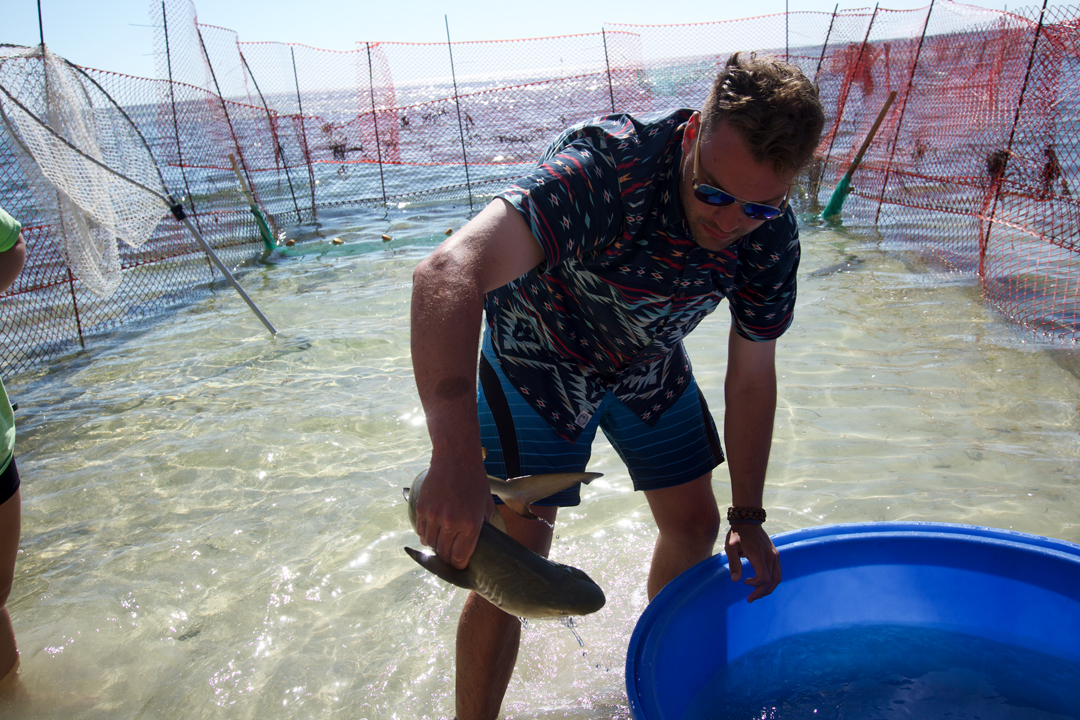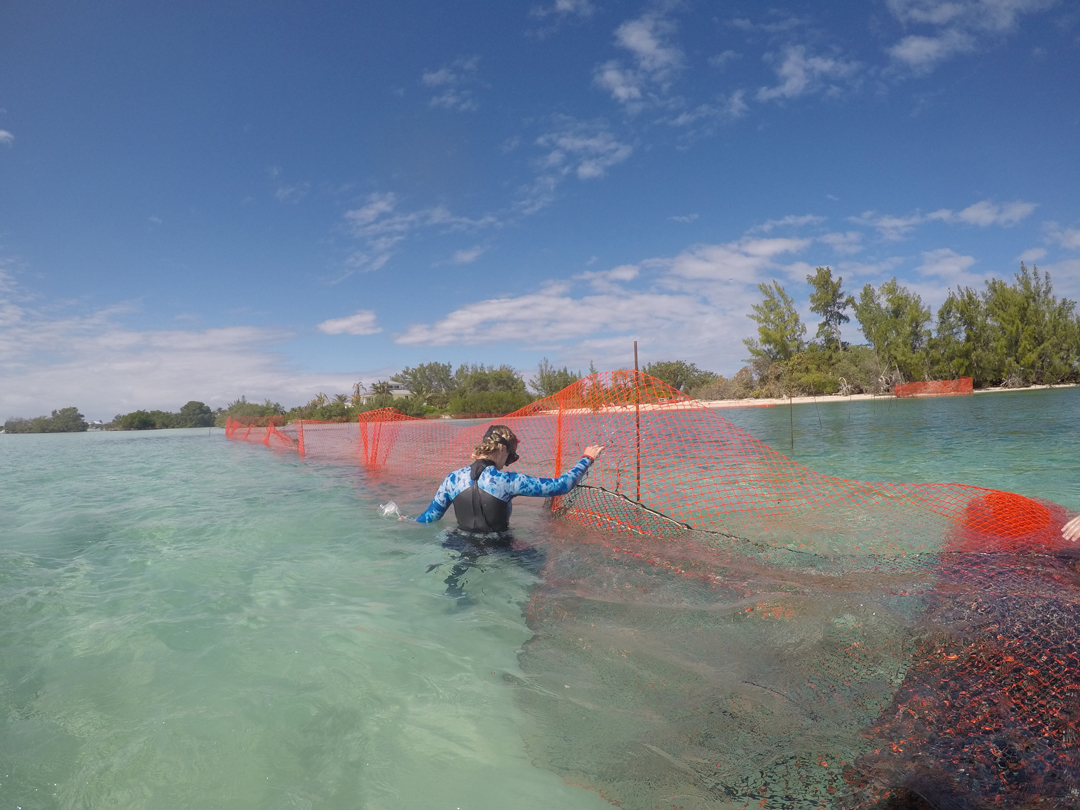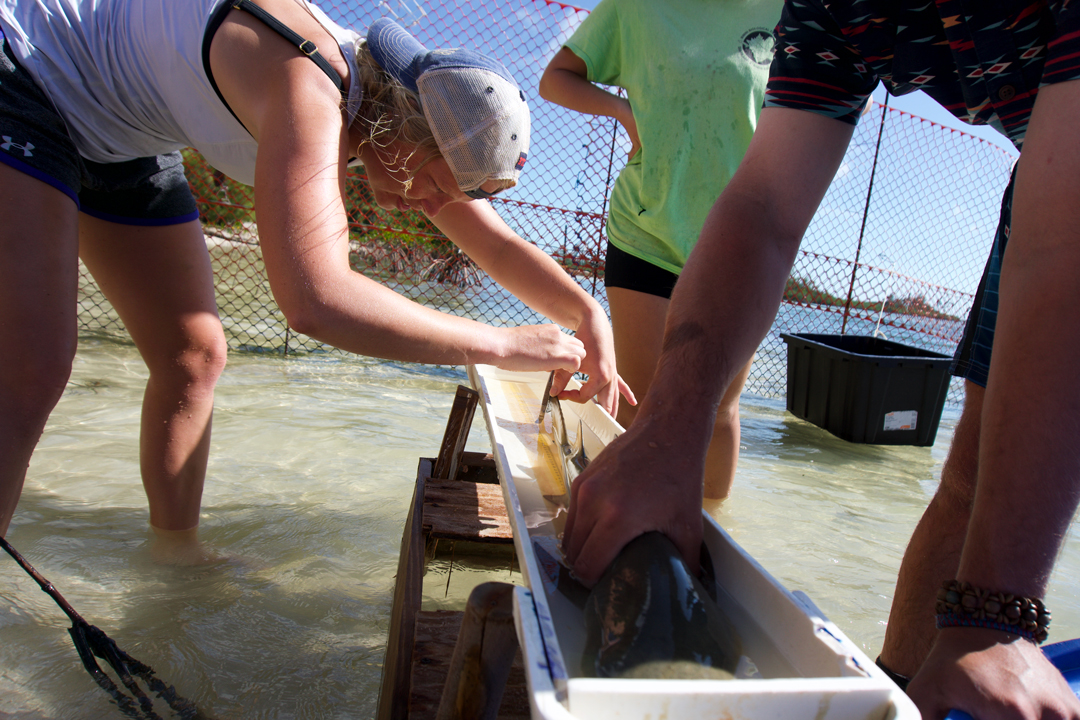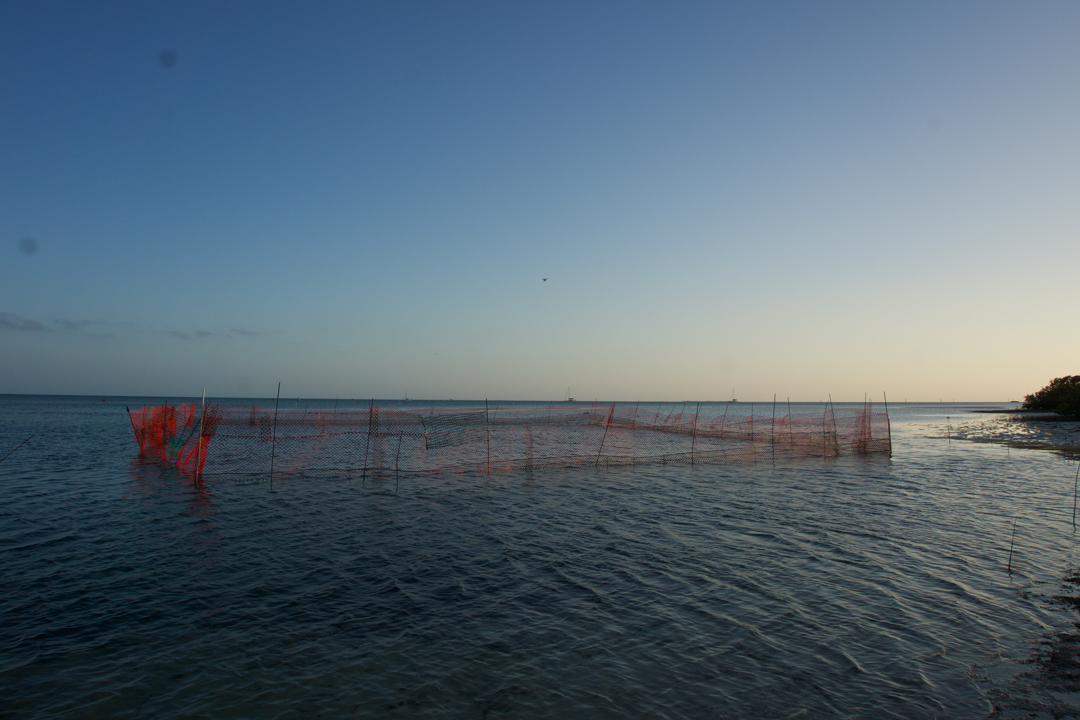The construction of Mega-pen
Ecology is inherently driven by making observations of the natural world. By studying plants and animals in their native environment, we can gain insights on their interactions with one another, as well as their physical surroundings. However, it is often necessary to complement these field observations with experimental work in order to better understand causative relationships within a controlled setting.

Aerial view of the holding pen to be used for experimental validation of UAV detection rates for elasmobranchs. Measuring 650m2, this holding pen is the largest in the history of the Bimini Biological Field Station. Photo © James Kilfoil | Florida International University

Bimini Biological Fields Station project student Nicolas Lubitz and intern Sophie Prendergast preparing to transfer a juvenile lemon shark from a holding pen to the larger experimental pen. Prior to transferring the sharks, each is measured and weighed, while staff also note the sex of the animal and if it has been previously captured. Photo © James Kilfoil | Florida International University
For shark research, this often means using semi-wild enclosures, referred to as holding pens. This week with the help of Dr. Mark Bond and Bimini Biological Field Station (BBFS) project students and interns Kendall Brancart, Ko Chuan Yang, Blake Hamilton, Nicolas Lubitz, and Francesca Mason, our team constructed the single largest shark holding pen in the history of the BBFS! Encompassing 650 squared meters, “Mega-pen” as it has been endearingly dubbed by the BBFS staff, will allow us to conduct unmanned aerial vehicle (UAV; aka drone) surveys over an area where we know the exact density of sharks.

Bimini Biological Field Station project student Kendal Brancart assisting with the construction of the holding pen to be used in our shark UAV detection trials. Using a combination of plastic mesh, rebar, cinderblocks, and zip ties, these semi-wild enclosures help to ensure we know the exact density of sharks within the pen. Photo © James Kilfoil | Florida International University

Bimini Biological Fields Station project student Nicolas Lubitz and intern Sophie Prendergast preparing to transfer a juvenile lemon shark from a holding pen to the larger experimental pen. Prior to transferring the sharks, each is measured and weighed, while staff also note the sex of the animal and if it has been previously captured. Photo © James Kilfoil | Florida International University
Why survey an area when you already know how many sharks are there? Simply put, just because a shark is there, doesn’t mean you’ll see it. By quantifying how often we see (or rather don’t see) a shark, we can vastly improve the accuracy of UAV surveys used to estimate shark abundances. Using lemon and nurse sharks, along with cut-out model sawfishes, we are hoping to understand how detection rates from UAVs may vary by depth, wind conditions, time of day, and even species. Preliminary flights are showing promising results, and we are hoping to use what we learn from our pen trials to aid in our UAV survey of sawfishes around Bimini later in the year. We have a lot more work cut out for us, so stay tuned as our project progresses!

Project PI James Kilfoil conducting unmanned aerial vehicle surveys of sharks over a holding pen with a known density. Photo © James Kilfoil | Florida International University
